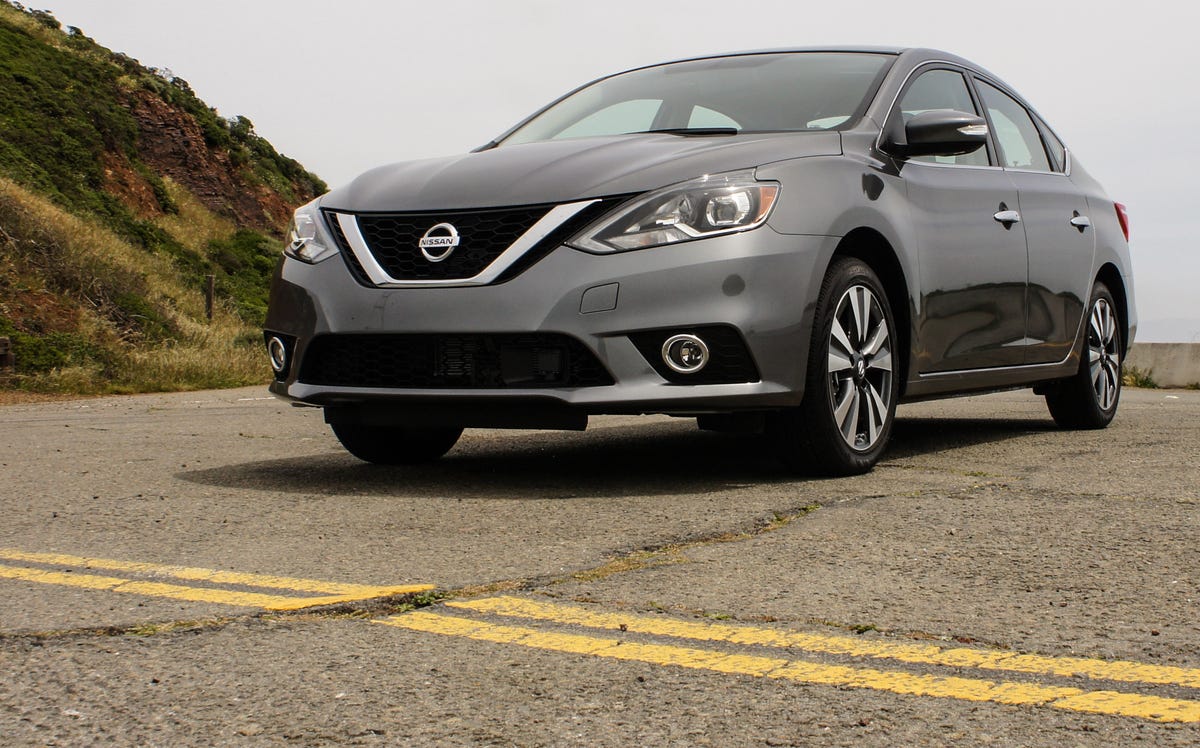2016 Nissan Sentra shows refreshed front-end, impressive driver assistance (pictures)
Nissan gave its entry-level sedan, the Sentra, a new look and some new tech for the 2016 model year.

Nissan launched the seventh generation of its Sentra entry-level sedan for the 2013 model year and gave it a refresh for the 2016 model year that includes new styling and updated tech features.
Formerly a compact, the Sentra is now a midsize sedan according to EPA definitions, meaning more passenger and cargo room.
Nissan gave the 2016 Sentra its corporate design language up front in the form of its V-grille.
The Sentra remains a front-wheel-drive five-passenger sedan.
Here's another look at the new grille.
The radar module embedded in the lower intake enables adaptive cruise control and automated emergency braking.
The roof arch makes for reasonable headroom in the rear seat.
Nissan sells the Sentra in trims range from S to SL, at about $17,000 to $23,000 respectively.
The Sentra's suspension delivers a firm ride.
Fuel economy comes in at 29 mpg city and 38 mpg highway.
Although the Sentra offers very capable adaptive cruise control, Nissan does not have lane-keeping assist on the option sheet.
The drivetrain for all Sentra models is based on this 1.8-liter four-cylinder engine, good for 130 horsepower.
The base trim Sentra can be had with a six-speed manual transmission, but the upper trims come with a continuously variable transmission, that uses a system of pulleys rather than gears.
At 15.1 cubic feet, the trunk of the Sentra is large enough for most needs.
This high trim Sentra comes with leather-covered seats.
Rear seats are functional, with enough room across for three passengers.
Higher trim Sentras come standard with touchscreen head units, although Nissan has not implemented Android Auto or Apple CarPlay.
This SL trim Sentra comes standard with a 5.8-inch touchscreen featuring navigation and app integration.

